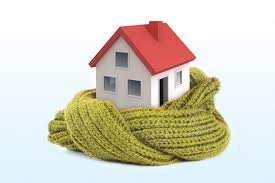Your Furbnow Privacy Settings
In order to give you the best experience, we use cookies for performance, analytics, personalisation, advertising and to help our site function. Want to know more? Read our Privacy Policy.
Published on October 3rd, 2023
To paint a picture of an unhealthy home and to give you an idea of what to look out for there are 6 symptoms that could indicate your home’s health isn’t what it could be.

To paint a picture of an unhealthy home and to give you an idea of what to look out for here are 6 symptoms what could indicate your home’s health isn’t what it could be:
You might find that your kitchen is warmer than your living room, and you might put that down to your oven and appliances, but it could be worth checking if it's not an insulation, boiler or piping issue.
If you have one particularly cold room there’s a few things you can check first to guage your home’s health:
2. Draughts running through your home
As important for your home’s health as insulating your home, sealing off cold channels is vital to making your house more energy efficient. With older properties this is a common issue where there’s only single glazing and pipes and walls haven’t been replaced or mended.
A way of finding draughty outlets, aside from feeling them, is by looking for cracks of daylight through closed gaps in windows, letter boxes and doors. You can wet the back of your hand and put it by the crack to see if you can feel anything coming in.
Draughts can lead to aches and pains if you sit in the way of them for too long. The cold causes muscles to contract and stiffen and can lead to further illness. Showing your home’s health is also important to your own health.
You can use caulking, putting plastic strips around the edges of the window, as a quick fix to reduce draughts. Replacing entire doors can also dramatically reduce draughts.
3. Condensation on the windows
Another important diagnosis of an unhealthy home is condensation. If you’re waking up each morning to find condensation on your windows then it’s a sign they’re not retaining inside heat. The condensation forms when warm, moist air from inside your home meets a cold surface like your window and condenses into water.
This water can run down the window to create mould along the frame which damages the window and can be bad for your respiration. It could force you to replace the windows altogether further down the line so anticipating this it might be worth replacing the windows with double glazing - saving yourself some time and money.
4. Walls that are cold in places
Usually the insides of your walls shouldn’t be cold as they’re not in direct contact with the elements outside, that’s the job of walls outside. But if they do feel cold then it may be that there's a ‘cold bridge’ where an internal element is in contact with an external element.
This is typical in homes built over the last century where walls were built with an internal and external layer, with a gap in the middle. Cavity insulation can resolve the issue of cold air being transferred between the two, it’s a relatively straightforward task if done correctly, filling the cavity (or gap) with blown in mineral fibre.
5. Melted snow on the roof
A symptom of your home’s health that only appears once a year if that, but a big symptom nonetheless is melted snow on your roof. All heat escapes through the top of your home (unless you live in a middle floor flat), but the right amount of insulation can limit escaping heat - keeping it in with you. The telltale sign of poor roof insulation is seeing a home with melted snow on top. Typically healthy, well insulated homes will have a full layer of snow on the roof (should you get decent snowfall), this is because the insulation stops the heat leaving the inside of the house to melt.
If you have poor roof insulation, this melted snow can travel down into your gutters and if you get particularly cold winters the water could freeze forming a kind of ice dam. If this blocks water from escaping off of your roof then it can cause problems with draining away unwanted water.
6. High energy bills
This might sound obvious, but it's often the most immediate sign of your home’s health not being tip top, is having higher bills or energy consumption than you’d expect. If you feel like you’re using a lot of energy to heat your home to a reasonable level, it could be down to energy inefficiencies around the property.
Smart meters can help provide valuable data around energy usage, showing how much you’re spending on energy in real-time. If you notice after heating you notice jumps in the amount you're spending when you turn the heating on or run hot water, it could be worth looking at where the energy is going.
Written by

Oisin Teevan